Research makes a solid case for eating breakfast, whether at home or at school. The study, “Ending Childhood Hunger: A Social Impact Analysis” from Share Our Strength and Deloitte, indicates that students who eat breakfast achieve an average 17.5% higher scores on standardized math tests and attend 1.5 more days of school. Students who attend school regularly are 20% more likely to graduate from high school.
Every school day, more than 90,000 schools/institutions participating in the USDA’s School Breakfast Program provide a nutritious, balanced breakfast to 14.71 million kids – 2.42 billion breakfasts annually. School breakfasts deliver the nutrition students need to concentrate on their studies and fuel them until lunchtime.
Working to Increase School Breakfast Program Participation
While the School Breakfast Program is widely available, student participation lags significantly behind school lunch, suggesting that students may be starting their day under-nourished and that schools may have an opportunity to increase revenues for their food service programs by increasing breakfast participation. Some districts report breakfast generating the highest profits for their programs. If your School Breakfast Program is serving less than 50% of your student population, you could be missing out on significant revenues.
We know many factors contribute to low participation at breakfast: Students may eat prior to coming to school or they arrive at school after breakfast service has concluded.
With academic outcomes supported by well-nourished students, it's imperative to increase the number of kids eating breakfast. Implementing a successful School Breakfast Program or increasing participation in an existing program is not difficult, especially with CKC's multiple options for service, including our wide variety of reimbursable breakfast bags.
1. Identify your School Breakfast Program Service Style
Thirty years ago, breakfast was only available in the cafeteria. Today, schools offer grab-and-go options or breakfast-in-the-classroom in lieu of or in addition to cafeteria-served breakfast. “Breakfast After the Bell,” which provide students breakfast in the classroom or a second-chance grab-and-go after the first period, has shown to increase participation in the School Breakfast Program.
There are pros and cons to each service style/location:
- Cafeteria service, which allows schools to offer a wider variety of foods, including heated options such as burritos and breakfast sandwiches. Cafeteria service is generally only offered prior to the bell and requires more foodservice staff to prepare, serve and clean up.
- Grab-and-go (before and/or after the bell) service requires movable breakfast carts and/or display racks that can be stocked with CKC breakfast bags and deployed at optimal points within the school to attract students on the way to class. Offerings generally include fruits, whole-grain muffins, cereal bars, string cheese, yogurt, etc. that can be easily eaten on the go.
- Breakfast-in-the-classroom (BIC), whether offered before or after the bell, works best for elementary schools that qualify for the Community Eligibility Provision, which provides free meals to all students without family applications and verification of income. A plastic bus tub can be used to organize and deliver the day’s breakfast bags to each classroom. Students grab their breakfast as they come into class and eat as the teacher shares morning announcements. The school in this video used insulated cooler bags to organize the daily offerings for each classroom. The bags were placed into wagons that students pulled from the kitchen to classrooms.
Some schools shy away from BIC service for concerns it will burden classroom teachers and create mess throughout the building. This has been unfounded by many schools. In fact, the National Education Association Foundation has backed BIC with its BIC toolkit and teacher handbook. Check out the Breakfast-in-the-Classroom Resources from the School Nutrition Foundation to learn how best to overcome challenges and successfully implement BIC.
2. Choose Your Daily Offerings
The U.S. federal nutritional guidelines that govern the School Breakfast Program require every participating site to offer four components daily, of which students must take a fruit or vegetable and two other components for that meal to qualify as a reimbursable meal. A ½ cup of fruit, fruit juice or vegetable must be selected for a meal to qualify for USDA reimbursement. In addition, the main breakfast entree must be a whole-grain-rich item. While the USDA does not specifically audit sugar content in whole grain breakfast foods, only foods low in sugar will meet the overall nutritional requirements of a USDA-reimburseable meal. CKC's breakfast bags make offering a reimburseable breakfast a breeze.
3. Promote Your Program
One of the USDA requirements for the School Breakfast Program is that each participating school/district/institution must promote the availability of breakfast. Thankfully, there are many resources readily available from the Partners for Breakfast in the Classroom, USDA Team Nutrition and others. You can also use our breakfast edition of Cafeteria Connection, our newsletter for parents, which can be found in the Resources section of the client portal.
The first week of March each year is National School Breakfast Week, which is a prime opportunity to shine a spotlight on your School Breakfast Program. The School Nutrition Association has a toolkit full of ideas for making the most of the occasion as well as marketing and PR resources to share your celebration with your parents and the community.
Do you need funding for your School Breakfast Program? Action for Healthy Kids, Fuel Up to Play 60, Food Research and Action Council, Partners for Breakfast in the Classroom and Share Our Strength/No Kid Hungry offer grants that could benefit your program.


